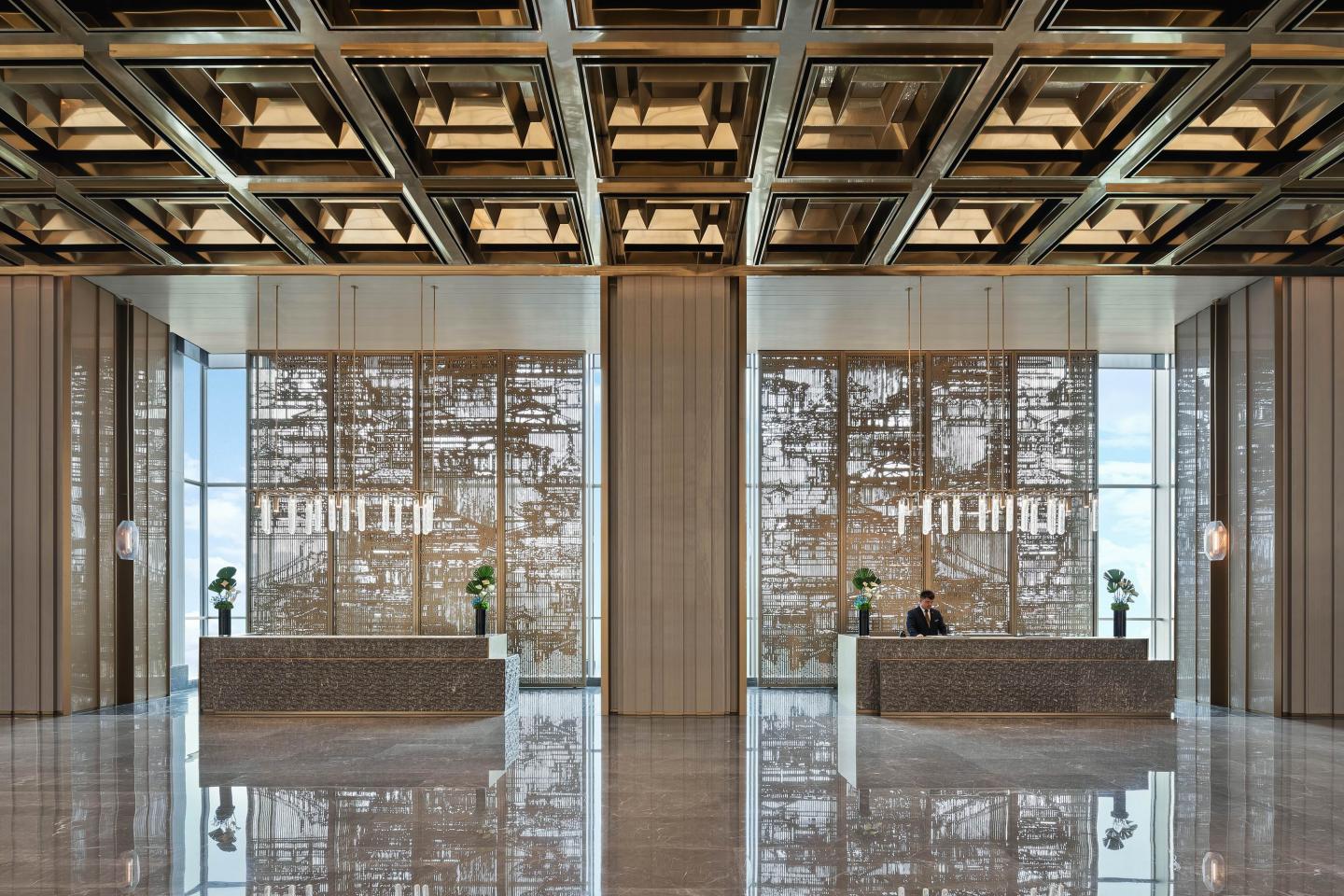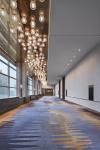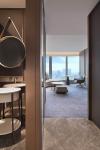Nowadays it is becoming more commercialised and globalised, the inheritance and representation of national culture is the search for “Self Identity” for each region, each ethnic group and each individual, and is the questioning and perception of “Where do I come from” and “Where am I living”. — Mr. Yang Bangsheng
Jiangnan as a beautiful land, Jinling as an imperial capital; with majestic palaces and towers, and with plenty of cultural relics and historic sites, Nanjing is a history book with profound and lingering flavour, while Ming Dynasty Palace is the most marvellous and splendid part of it.
Located near to Ming Dynasty Palace, Kempinski Hotel Nanjing tracing its historical context, tries to explore and interpret that prosperous dynasty which has vast territory.YANG adopts the “Ming Dynasty Palace” storytelling approach to optimise the representation of majesty and profundity of Jinling.
The main hall of the Palace where important festivals and celebrations from hundreds of officials take place, representing the highest standard of imperial palace architecture and national etiquette. The lobby taking this as inspiration, adopts a modern approach to create a majestic and grand ambience to highlight its noble greeting etiquette.
A large-scale artistic screen in the reception desk applies double layers of metal to resemble the order and proportion of the palace, which lets guests to experience the illusion of history as well as avoids the direct sunlight into east-west oriented lobby.
Dark metals are applied to reconstruct and interpret the “coffered ceiling” element which forms a sense of repetitive order and creates the ambience of royal grandeur and majesty. The wall responds to the ceiling concept, applying large marble blocks to create the magnificent Ming Dynasty city wall with built-in light box which reflects the mottled texture of stone surface and enhances the sense of history.
The entrance of lobby lounge resembling the form of the city gate is accessible yet not fully exposed, which intrigues guest to explore. The upper part of “City Gate” adopts the ingenious bracket techniques to resemble the style of official headwear, which symbolises entering through this with promotion step by step and therefore responds to the design theme of “Jiangnan Examination Hall” of the lobby lounge.
The uneven and orderly wall contrasts with the bookshelf wall in the middle, with simplicity in its grandeur, which implies that imperial scholars have knowledges and ambitions. Floating ribbon decor of the ceiling implies the natural and unrestrained style while scholars wielding their writing-brushes, which embodies the richness and profundity of “National Cultural Centre”. The arrangement of several low and wide sofas facilitates communication and leisure.
From the examination hall to taverns to experience another kind of elegance. The all-day-dining restaurant integrates the element of “Jinling Taverns”, and the imagery of window lattices above the pick-up counter and suspended cabinet creates the scenery of street shops and adds a touch of intrigues to the dining. The rough and unadorned buffet counter presents the rustic and simple beauty of streets.
With oars dipping and lamp shadow dispersing in the ten miles Qinhuai River, the prefunction represents the illuminated and splendid scenery of the lantern festival. The ceiling made of metal panels responds to carpets, tinging misty waterscape of Qinhuai River. The layered lightings looks as if Kongming Lanterns dispersing in the sky, as if lanterns in the water, and as if lanterns on both sides of the river, adding a touch of romantic poetry to the convivial feast.
The rigour of the metal in the wine & cigar lounge contrasts with the rustic original wood to create a low-key yet distinguished style, which caters for needs of the gentry and new nobles. One piece of carpet centralises the negotiation area and facilitates business discussion and parties.
Different from the magnificent and grand design of the public area, the rooms emanates a sense of retro and tranquil ambience of “Dreaming back to Ancient Times”. Traditional “screen” element in irregular form is cladded on the wall to showcase its artistic beauty; white decorative painting on the headboard backdrop creates a distant and lingering ambience with its abstract brushwork. The bedroom and washing room in the suite adopts side-by-side design approach to enhance the sense of space. The banquette at the French window facilitates guests to appreciate the marvellous scene of Mt. Zijin or the flourishing night scenery of Qinhuai River.
Searching for the charms of imperial capital and exploring the splendidness of Ming Dynasty, YANG approaches the modern space to interpret its historical glory, applies artistic conception to create emotional ambience, and creates a unique Kempinski Hotel which embodies distinctive characteristics of Nanjing and reinterprets the elegant imperial capital it its way.
2013
2019
Project Name: Kempinski Hotel Nanjing
Project Location: No. 218, Longpan Middle Road, Qinhuai District, Nanjing City, Jiangsu Province
Project Area: 36666 square meters
Open Date: October 1, 2019
Design Unit: Yang Bangsheng & Associates Group











